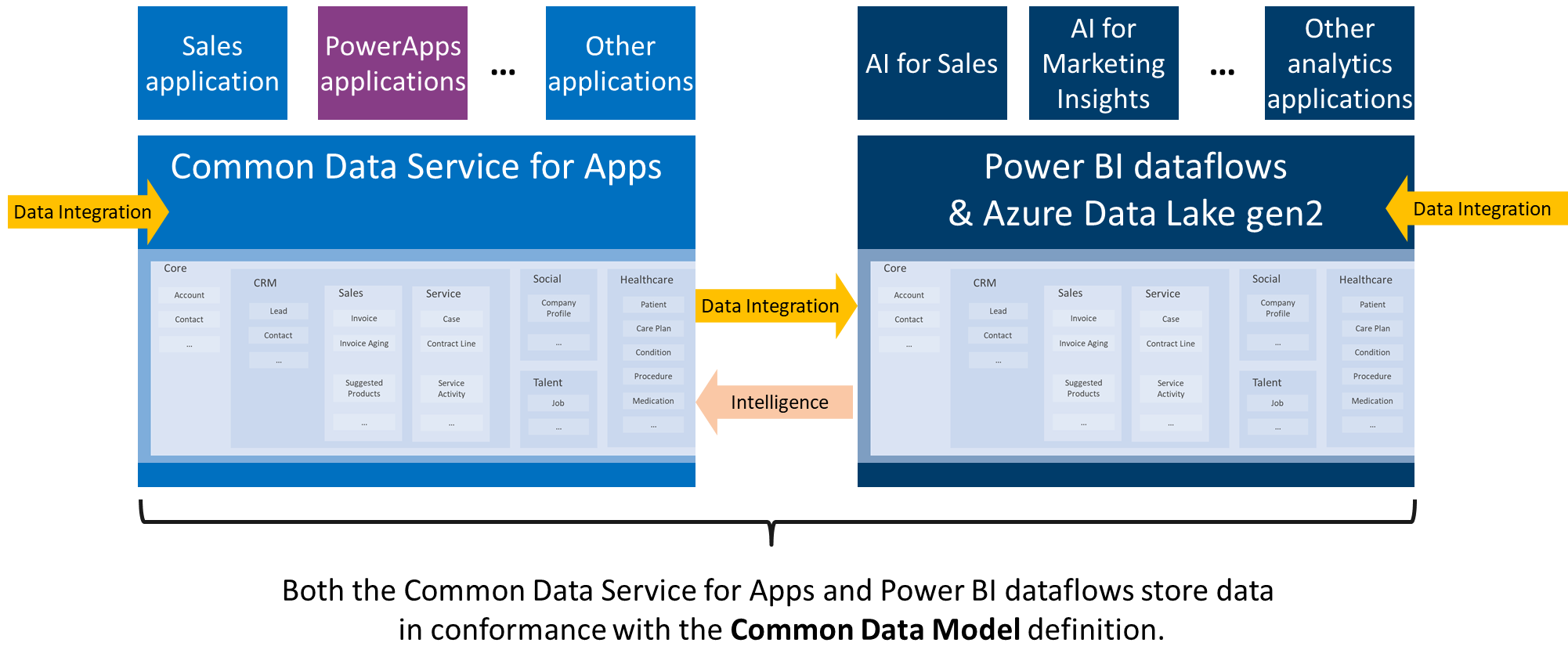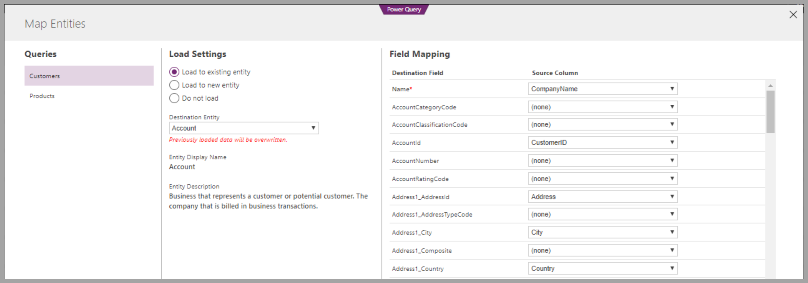About Common Data Model
Common Data Model is built upon a rich and extensible metadata definition system that enables you to describe and share your own semantically enhanced data types and structured tags, capturing valuable business insight which can be integrated and enriched with heterogeneous data to deliver actionable intelligence.
With Common Data Model, you can structure your data to represent concepts and activities that are commonly used and well understood. You can query and analyze that data, reuse it, and interoperate with other businesses and apps that use the same format. Common data model can be used to define thousands of entities such as Customer, Product, Opportunity, Sale, Purchase Order, etc. as well as identifying data for regulatory and compliance purposes. Discover and explore up-to-date Common Data Model Entity Reference
Learn more about Common Data Model definable objects.
Microsoft provided Common Data Model reference entities are categorized into subject areas for easy discoverability and published to public GitHub repo with supporting documentation. These entities have matured over tens of years with thousands of hours of investment from within Microsoft as well as the partner eco-system.
As opposed to building a new data model for your app, you can simply re-use the entity definitions available to you. Common Data Model can be used by various applications and services including Microsoft Dataverse, Dynamics 365, Microsoft Power Platform, and Azure ensuring that all of your services can access the same data. Common Data Model is already available to many customers. A great example of how Common Data Model can be leveraged is with the data-preparation capabilities in Power BI dataflows that creates data files which follow the Common Data Model definition, which is stored in Azure Data Lake. The Common Data Model definitions are open and available to any service or application that wants to use them.

Data described using Common Data Model can be used with Azure services to build scalable analytical solutions as well as being a source of semantically rich data for applications driving actionable insights like Dynamics 365 Customer Insights. that reason over data using machine-readable semantic metadata. Common Data Model is used to define entities for Dynamics 365 applications in Sales, Finance, Supply Chain and Commerce can be readily available in Azure Data Lake.
Microsoft continues to extend the Common Data Model in collaboration with many partners and subject-matter experts so that more industries, building Industry Accelerators such as Automotive, Banking, Healthcare, Higher Education, Not for profit can benefit from the Common Data Model and the platforms that support it.
Let’s explore some of the scenarios in detail
Jump-start app development with Power Apps and Dataverse
Export data from Dataverse into Azure Data Lake.
Export data from Dynamics 365 Finance and Operations into Azure Data Lake
Perform quick data integration using Power Query Online.
Ingest data from other systems into Azure Data Lake using Power BI dataflows.
Optimize data exchange in the Azure Data Lake.
Jump-start Dataverse app development
By using Dataverse, you can jump-start app development by using the Common Data Model with business logic, security, and integration already built- in. The platform provides these benefits:
Leverage packaged business applications: Many Microsoft Dynamics 365 solutions and third-party apps are built on top of (or at least leverage) Dataverse. When your data is structured according to the Common Data Model, you can take advantage of those packaged applications.
Gain access to customized solutions: Developers who understand and work with data in the Common Data Model format have created an ecosystem of extensions and complete apps.
Whatever your intent, using the Common Data Model structures your data in a common format so that you can use, share, and analyze it more easily.
Resources for Dataverse
Export data from Dataverse into Azure Data Lake
Simple and intuitive interface to enable and administer replicated entities.
Ability to link/unlink the Dataverse environment to a data lake in customer’s Azure subscription.
Continuous replication of entities to Azure data lake.
Support for initial and incremental writes for data and metadata.
Support for replicating standard and custom entities.
Support for replicating create, update and delete operations.
Continuous snapshot updates for large analytics scenarios.
Learn more: Exporting Dataverse data to Azure Data Lake
Export data from Dynamics 365 Finance and Operations into Azure Data Lake
You can configure your Dynamics 365 Finance and Operations environment with an Azure Data Lake in your own subscription. After the configuration is completed, your data lake will reflect tables and entities from Finance and Operations apps.
For more information, see:
Perform quick data integration by using Power Query Online
Power Platform and Power BI offer data-integration experiences through Power Query Online, allowing users to bring in data from a variety of sources, transform it if necessary, and then map it to standard entities in the Common Data Model or create custom entities. Power Query Online leverages the same visual, self-service data preparation experience as Power Query within Microsoft Excel and Power BI Desktop, so existing users can begin using it quickly.

Ingest data by using Power BI dataflows
You can use the dataflows feature of Power BI to ingest data into the Common Data Model format from Dynamics 365, Salesforce, Azure SQL Database, Excel, SharePoint, or another source. You create and manage dataflows in app workspaces by using the Power BI service. After you've connected and prepared your data, you can choose to map it to a Common Data Model standard entity or load it as a custom entity in the Common Data Model form in Azure Data Lake Storage Gen2.
Organizations can incorporate dataflows to suit their needs in these ways:
Customize standard entities and create their own.
Create dataflows programmatically with custom definition files (model.json).
Leverage powerful Azure products such as Azure Machine Learning, Azure Databricks, and Azure Data Factory.
Add CSV data from Azure Blob storage.
Enjoy more storage, more frequent refreshes, incremental refresh, and computed and linked entities with Power BI Premium.
Resources for Power BI
Optimize data exchange in the Azure Data Lake
Azure Data Lake Storage Gen2 is designed specifically for enterprises to run large-scale analytical workloads in the cloud. A wide variety of applications and services can easily access data in a data lake, however, each consumer must understand the format and meaning of the data before it can provide value. The Common Data Model simplifies this process by providing a metadata system that describes the data and standard entities to which producers can map.
Resources for the Common Data Model and Azure Data Lake Storage Gen2
Feedback
Coming soon: Throughout 2024 we will be phasing out GitHub Issues as the feedback mechanism for content and replacing it with a new feedback system. For more information see: https://aka.ms/ContentUserFeedback.
Submit and view feedback for